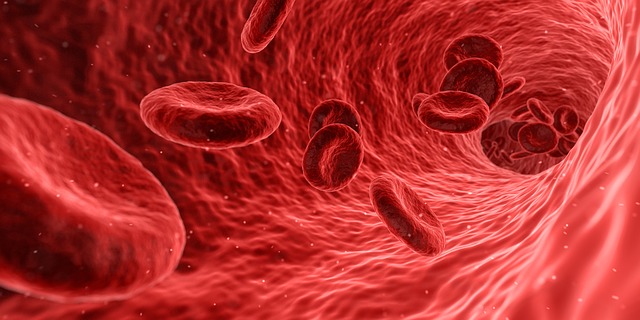Most people never hear of vitamin K until they (or someone they love) are placed on a blood thinner like Warfarin or Coumadin. At that time, these people are told that they need to avoid eating foods that are high in vitamin K. The unfortunate consequence of this can be an increase in atherosclerosis, kidney stones, osteopenia and osteoporosis. And it isn’t necessary.
Vitamin K and Blood Clotting
Vitamin K helps make proteins needed for blood clotting. Anti-coagulant drugs like warafarin (or Coumadin) work by blocking the production of those clotting proteins, helping to “thin” the blood and prevent clotting. Dramatically increasing your intake of vitamin K over the long-term may require you to slightly increase the dose of blood thinner. Let me say that again to let the implications sink in: dramatically increasing your intake of vitamin K over the long-term may require you to slightly increase the dose of blood thinner. It’s big changes in daily vitamin K levels over time that can influence blood clotting, not how much you eat; and as you will soon see, vitamin K is very important for overall health.
Therefore, a more prudent (and accurate) recommendation for people on blood thinners would be to consume about the same amount of vitamin K rich foods (like green leafy vegetables) daily. You see, vitamin K not only helps with blood clotting, it also turns out to be critically important in how and where calcium is deposited in the body.
Vitamin K and Bone Health
In addition to helping to make proteins involved in blood clotting, vitamin K plays a very important role in calcium metabolism and bone health. Vitamin K2 helps to control the flow of calcium into the bones and keeping it out of the tissues and arteries. While vitamin D has long been known to facilitate calcium absorption, it is vitamin K2, through its carboxylation of ostecalcin, that guides calcium into bones and prevents its absorption into arteries; in essence, vitamin K2 helps to bind calcium into the bones and keep it out of circulation . Vitamin K2 also activates a protein in blood vessels (called matrix Gla-protein (MGP)) that keeps calcium out of the arteries.
This is why studies have shown that vitamin K2 intake is associated with a reduced risk of coronary calcification (arteriosclerosis) and mortality from coronary heart disease. It can also explain why vitamin K2 deficiency is associated with a high prevalence of kidney stones. By binding calcium in the bone, vitamin K2 keeps calcium out of the circulation which prevents it from binding with oxalate to produce calcium oxalate kidney stones.
Sources and Vitamin K toxicity
Vitamin K1 is found in all dark leafy greens as well as broccoli, Brussel sprouts, cabbage and parsley. Vitamin K2 is found in natto, sauerkraut, kefir, fermented cheese and liver/organ meats. Vitamin K2 can be formed from vitamin K1 by bacteria in the colon and both can be found in supplements.
Although allergic reaction from supplementation is possible, no known toxicity is associated with high doses of vitamin K1 or vitamin K2 and no tolerable upper intake level (UL) has been set.
Blood clotting studies in humans using 45 mg to 135 mg (45 mg 3x/day) per day of vitamin K2 (as MK-4) showed no increase in blood clot risk.
Unlike the safe natural forms of vitamin K1 and K2, there is a synthetic form of vitamin K, vitamin K3 (menadione) that is demonstrably toxic; this form is only available as a prescription.
References
- “Vitamin K”. Micronutrient Information Center, Linus Pauling Institute, Oregon State University, Corvallis, OR. July 2014. Retrieved 20 March 2017.
- O’Keefe, J. H.; Bergman, N.; Carrera Bastos, P.; Fontes Villalba, M.; Di Nicolantonio, J. J.; Cordain, L. (2016). “Nutritional strategies for skeletal and cardiovascular health: hard bones, soft arteries, rather than vice versa”. Open Heart (Review). 3 (1): e000325. doi:10.1136/openhrt-2015-000325.
- Rasmussen, S. E.; Andersen, N. L.; Dragsted, L. O.; Larsen, J. C. (Mar 2006). “A safe strategy for addition of vitamins and minerals to foods”. European Journal of Nutrition. 45 (3): 123–135.
- Ushiroyama, T.; Ikeda, A.; Ueki, M (Mar 2002). “Effect of continuous combined therapy with vitamin K2 and vitamin D3 on bone mineral density and coagulofibrinolysis function in postmenopausal women”. Maturitas. 41 (3): 211–221.
- Asakura, H.; Myou, S.; Ontachi, Y.; Mizutani, T.; Kato, M.; Saito, M.; Morishita, E.; Yamazaki, M.; Nakao, S. (Dec 2001). “Vitamin K administration to elderly patients with osteoporosis induces no hemostatic activation, even in those with suspected vitamin K deficiency”. Osteoporosis International. 12 (12): 996–1000.


